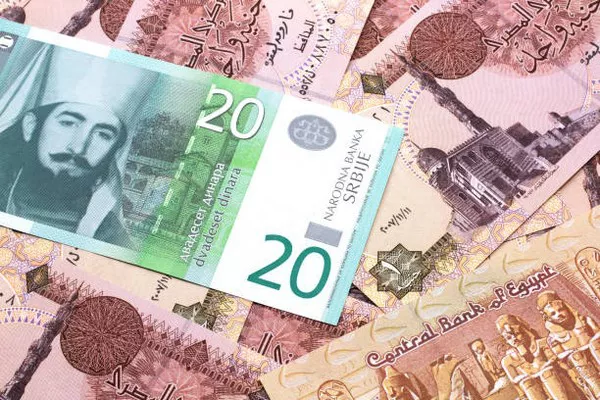In the realm of global finance, the concept of currency strength or weakness plays a crucial role in understanding economic dynamics. One intriguing aspect often discussed is the identification of the weakest currency in the world. This designation can vary over time due to numerous factors affecting currency valuation. To delve deeper into this topic, it’s essential to ask: What defines a weak currency and what factors contribute to its status?
Defining Currency Weakness: Understanding the Basics
To comprehend the notion of the weakest currency, we must first establish what currency weakness entails. A currency’s strength or weakness is primarily determined by its exchange rate relative to other currencies. A weaker currency depreciates in value compared to stronger counterparts, making it less valuable in international markets. This decline in value could be due to various factors such as economic instability, high inflation rates, political uncertainty, or trade imbalances.
Understanding the fundamentals of currency valuation is crucial. Central banks and financial institutions monitor exchange rates closely to assess a currency’s strength. A weak currency often results in higher import costs, inflationary pressures, and challenges for businesses relying on foreign trade. Additionally, weaker currencies can impact a nation’s purchasing power abroad, affecting tourism, foreign investments, and overall economic competitiveness. Therefore, identifying the weakest currency requires a multifaceted analysis of economic indicators and geopolitical factors.
Factors Influencing Currency Weakness: Unraveling the Complexities
To pinpoint the weakest currency globally, it’s imperative to examine the multitude of factors that contribute to currency weakness. Economic instability is a significant driver; countries facing recessionary pressures or high levels of debt often experience currency depreciation. A weak economy erodes investor confidence, leading to capital flight and currency devaluation. Political instability and social unrest can also undermine a currency’s strength, as they create uncertainty that discourages foreign investment and trade.
Moreover, monetary policies play a pivotal role in currency valuation. Central banks can intentionally devalue currencies through measures like quantitative easing or interest rate cuts to stimulate exports and economic growth. While such policies can boost short-term competitiveness, they may lead to long-term currency depreciation. External factors like international trade imbalances and commodity prices further influence currency values. For instance, countries heavily reliant on imported goods or energy face currency depreciation when global prices rise. Geopolitical events such as trade wars or sanctions can exacerbate currency weakness, amplifying economic vulnerabilities.
Case Studies of the Weakest Currencies: A Comparative Analysis
Examining specific instances of currency weakness provides insights into the real-world implications of economic challenges. Venezuela’s bolívar stands out as one of the weakest currencies globally due to hyperinflation and political instability. The bolívar’s value plummeted, leading to severe economic turmoil and a humanitarian crisis. Similarly, Zimbabwe’s hyperinflationary spiral in the 2000s rendered its currency virtually worthless, prompting the country to adopt foreign currencies for transactions.
In contrast, the Lebanese pound has experienced significant depreciation amidst a deepening economic crisis and political instability. The pound’s decline has eroded purchasing power, fueling inflation and social unrest. These case studies underscore the interconnectedness of economic, political, and social factors in determining currency strength or weakness. They serve as cautionary tales of the detrimental impacts of prolonged currency depreciation on livelihoods and national stability.
Implications of Currency Weakness: Economic and Social Ramifications
The repercussions of having the weakest currency extend beyond economic indicators to societal well-being. High inflation resulting from currency weakness erodes real wages, impacting living standards and exacerbating income inequality. Businesses face challenges due to rising import costs, affecting profitability and employment. Furthermore, currency instability can undermine investor confidence, hindering foreign direct investment and economic development.
Socially, currency weakness can lead to heightened economic uncertainty and social unrest. Citizens may lose faith in their government’s ability to manage economic affairs, sparking protests and political upheaval. In extreme cases, hyperinflation driven by currency weakness can result in humanitarian crises, as seen in Venezuela and Zimbabwe. Thus, addressing currency weakness requires comprehensive economic reforms, prudent monetary policies, and international cooperation to restore stability and foster sustainable growth.
Conclusion: Navigating the Dynamics of Currency Valuation
Identifying the weakest currency in the world involves a nuanced understanding of economic, political, and social dynamics. Currency weakness is a symptom of broader economic challenges and can have far-reaching implications for nations and individuals alike. By examining the factors contributing to currency depreciation and its real-world impacts, policymakers and stakeholders can devise strategies to mitigate currency instability and promote economic resilience. Ultimately, fostering stable currencies is essential for sustainable economic growth and global financial stability.


